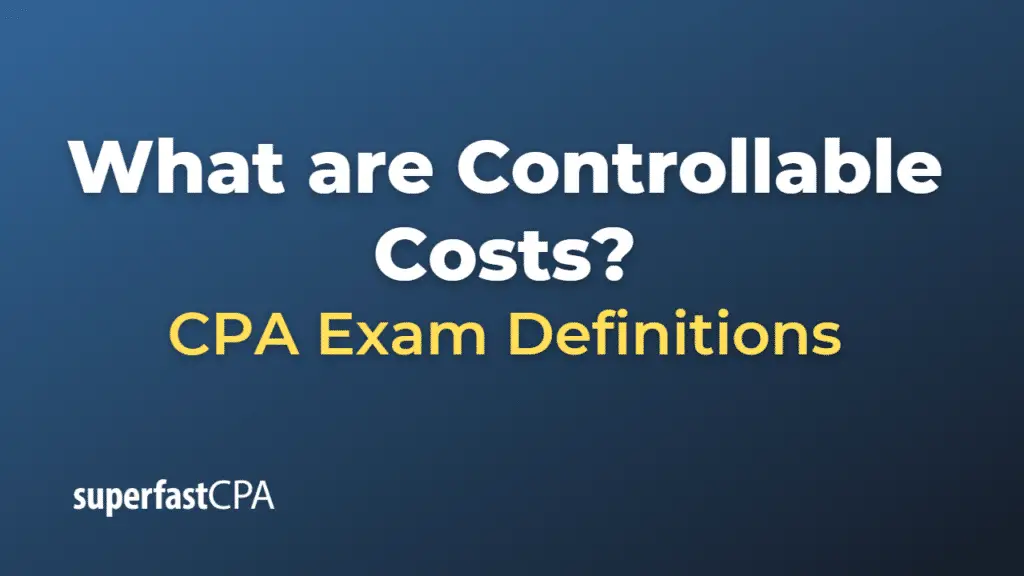Controllable Costs
Controllable costs are expenses that can be directly influenced, managed, or altered by the actions of individuals, teams, or departments within an organization. These costs can be controlled or adjusted in response to changes in business conditions, management decisions, or operational efficiency. Controllable costs are often associated with specific activities or decisions, making it easier for managers to monitor and manage them to achieve desired results or targets.
Examples of controllable costs include:
- Direct labor costs: Wages paid to employees directly involved in the production process or providing services can be controlled by adjusting the number of employees, work hours, or wage rates.
- Direct materials: The cost of raw materials and supplies used in production can be controlled through efficient purchasing practices, negotiation with suppliers, or substituting materials.
- Marketing and advertising expenses: The cost of promoting products or services can be controlled by adjusting the advertising budget, selecting cost-effective marketing channels, or targeting specific customer segments.
- Travel and entertainment expenses: Costs related to business travel and entertainment can be controlled by implementing policies to regulate such expenses, choosing more economical travel options, or reducing the frequency of business trips.
- Training and development costs: The cost of employee training and development programs can be controlled by selecting cost-effective training methods, adjusting the frequency of training sessions, or focusing on high-priority skill development areas.
It’s important to note that not all costs within an organization are controllable. Some costs, such as rent, insurance, and depreciation, are considered non-controllable or fixed costs because they cannot be directly influenced or changed by the actions of individuals, teams, or departments within the organization. Managers should focus on controlling and optimizing controllable costs to improve the organization’s overall financial performance and operational efficiency.
Example of Controllable Costs
Let’s consider a hypothetical example of a small manufacturing company that produces custom-made furniture. The company’s management team is focused on controlling costs to improve profitability and operational efficiency. They identify several controllable costs and implement measures to manage and reduce these expenses.
- Direct labor costs: The company has a team of skilled carpenters and other workers directly involved in producing furniture. Management decides to control labor costs by optimizing the production process, eliminating inefficiencies, and ensuring that employees work at full capacity. They also implement performance-based incentives to motivate employees and reduce overtime expenses.
- Direct materials: The company uses various types of wood, upholstery, and other materials in its furniture production. Management negotiates better deals with suppliers to obtain discounts or more favorable payment terms. They also explore alternative materials that may provide similar quality at a lower cost.
- Marketing and advertising expenses: The company advertises its products through local newspapers, radio, and online channels. To control these costs, management reallocates the advertising budget to focus more on digital marketing, which is more cost-effective and has a wider reach. They also use social media and content marketing strategies to engage with customers and promote their products at a lower cost.
- Travel and entertainment expenses: The company’s sales team frequently travels to meet with clients and attend industry events. Management implements a travel policy that requires employees to use more economical travel options, such as booking flights in advance or staying at budget hotels. They also reduce the frequency of business trips by using video conferencing and other online communication tools.
- Training and development costs: The company invests in training programs to develop the skills of its employees. Management decides to control these costs by utilizing online training resources, in-house trainers, and partnering with local vocational schools to provide cost-effective training programs.
By focusing on these controllable costs, the company’s management team can improve the organization’s overall financial performance and operational efficiency. By actively managing and reducing these expenses, they can increase profitability and maintain a competitive edge in the market.













